Five Hundred Years of Affordable and Social Housing in Malpas
FIVE HUNDRED YEARS OF AFFORDABLE AND SOCIAL HOUSING IN MALPAS
In the 'List of Buildings of Special Architectural or Historic Interest' published by the Department of the Environment in 1985, Malpas Civil Parish has 38 dwelling houses awarded Grade 2 status.
This list does not include Cholmondeley Terrace, the former almshouses in Church Street, which have been altered considerably during their 300 year lifetime.
The 2001 Census recorded 781 households in the parish, of which some were in multi-household residences.
The number of properties which could be described as philanthropic, affordable or social was around 250 which means that approximately one quarter of the total buildings in Malpas started life in this category.
So while the Listed Historical Buildings may receive most attention from guide-books and visitors, there are other houses that form an important part of the town's landscape.
Those who have lived in them have all made their own unique contributions to the life of the community.
Since 2013, Malpas has been hit by an unprecedented wave of building development so that if a summary of the situation was taken today, the proportion of philanthropic, affordable or social properties would be slightly less.
.
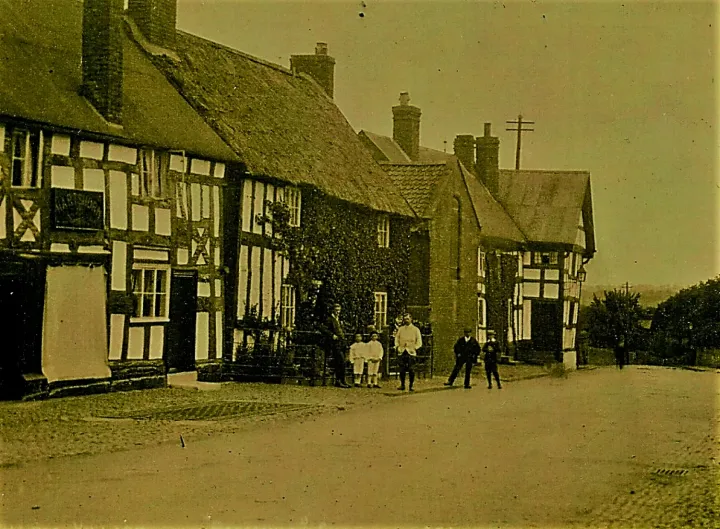
.
Until about 400 years ago, in the 17th century, most houses inhabited by working class families would have been basic timber-framed dwellings such as those shown here.
They were constructed on sturdy frames of oak, with the panels in filled with wattle-and-daub, known in Cheshire as 'clay windings'.
Roofs were generally of thatch, replaced in later centuries by slates, tiles or corrugated iron, representing a lower fire risk than the original straw.
Of these three timber-framed properties in Old Hall Street, two have now disappeared completely.
The one in the front of the picture, taken in the early 1900s, stood where the entrance is now to the car park for the 'Lion at Malpas'.
It was probably dismantled soon after the photograph was taken.
The one at the rear of the picture, then known as 'The Nest', was demolished in the 1950s.
.
Lost Timber Framed Properties
Below are some of the other timber-framed properties which were demolished during the 20th century.
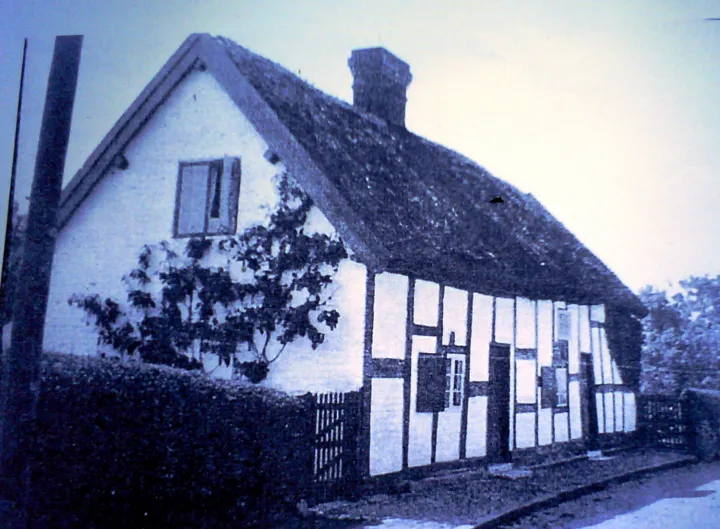
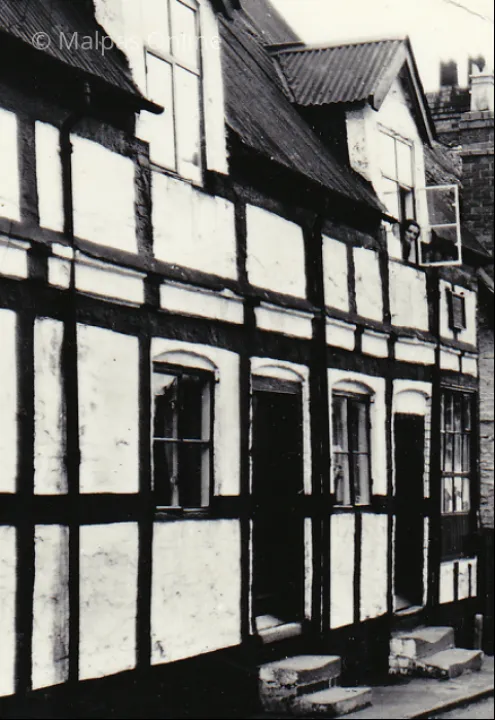
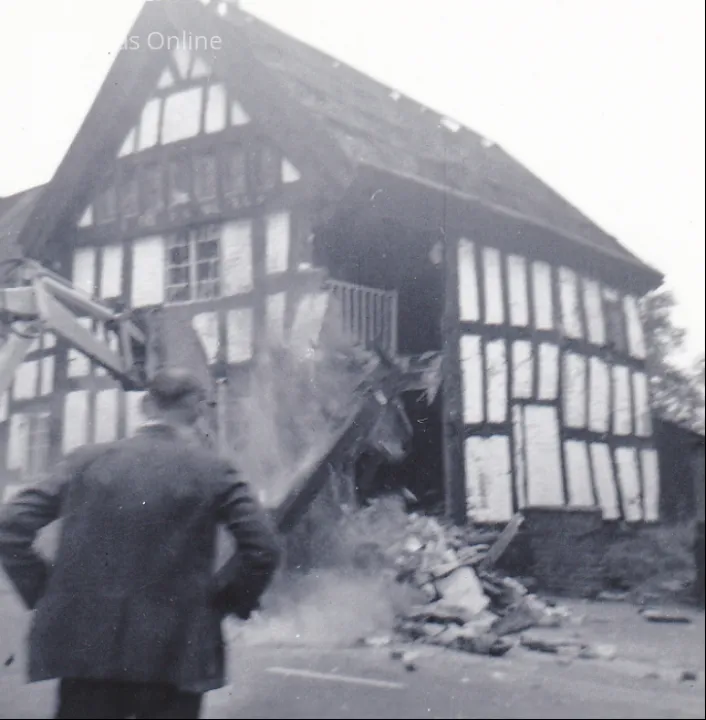
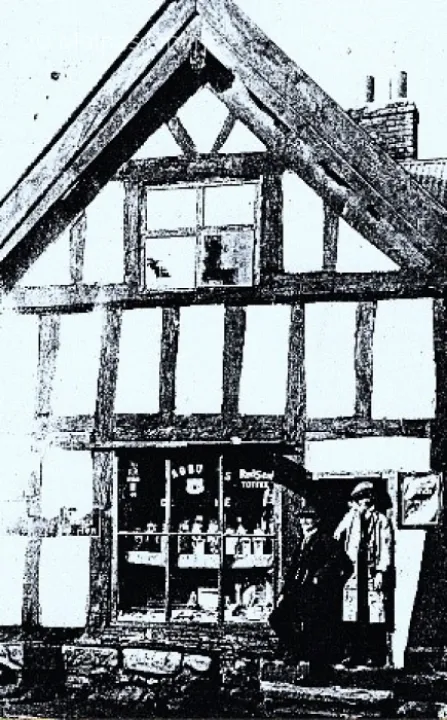
All of the timber-framed properties shown up to here were probably rented by the occupying families, either from private landlords or from one of the local landed estates, either Cholmondeley, Drake or Egerton.
.
The Almshouses
Sir Randle Brereton, who died in 1530, is shown below with his wife Lady Eleanor in effigy on their tomb in the church. He founded almshouses, originally for poor elderly men.
They were replaced, and possibly moved to the present site now known as Cholmondeley Terrace, in Church Street.
Although the almshouses were rent free, the almsmen did have to say prayers daily for the souls of Sir Randle and other deceased members of the Brereton family.
These prayers were intended to lift the souls of the deceased out of the limbo state known as 'purgatory', into the higher realms above.
The whole operation was supervised by the chantry priest, whose likeness carved on the side of the Brereton tomb is shown above centre.
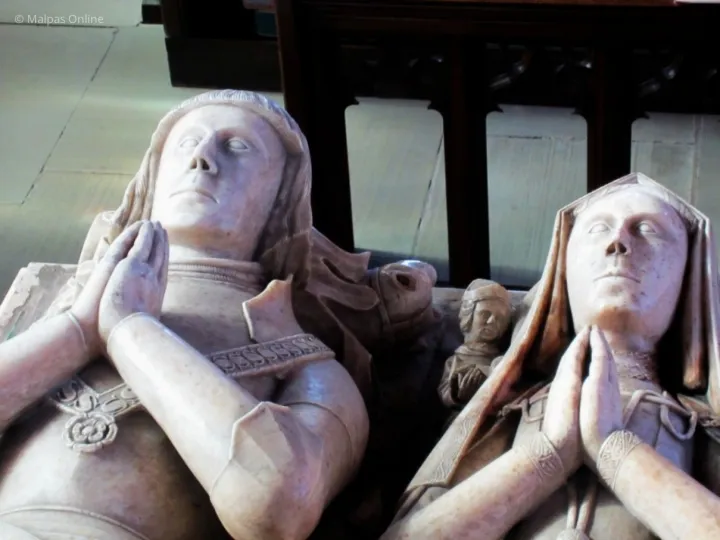
.

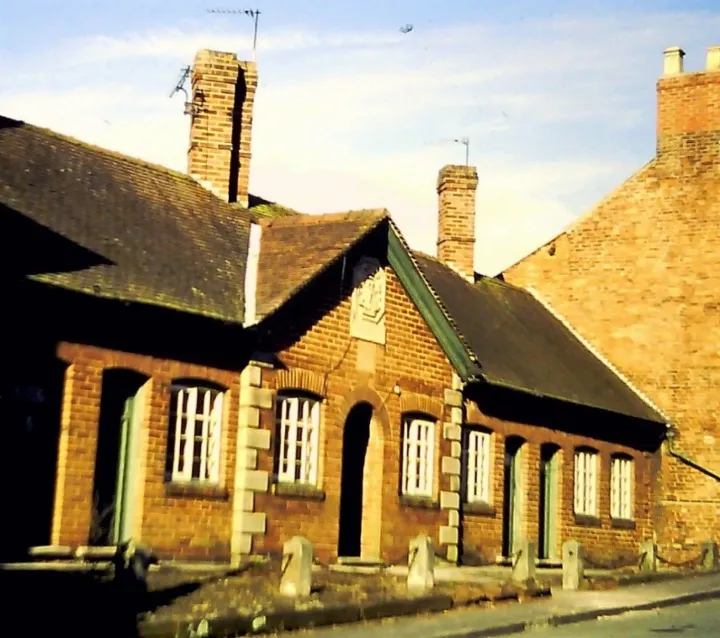
A Charity Commissioner's report published in 1837 describes them as 'six tenements, each with a nice little garden.
The inmates are generally widows, though there appears no restriction as to this.
Old age and a good character are their strongest recommendations upon application ...'.
At this time one of the houses was called 'the Nursery' because the person who occupied it had, in former times, been expected to look after, or 'nurse', the other five residents.
.
Below is Wigfield Terrace, originally six almshouses endowed in 1854 by the Reverend Henry Wigfield of Bickerton and paid for out of the fortune bequeathed to him in 1841 by Elizabeth Tayler, wife of a former Rector of Malpas.
These are a grade II listed building registered as Taylor's Almshouses

Originally they provided free accommodation for six alms persons, with the added benefits of a quarterly cash stipend and free coal.
The plan below taken from the Wigfield Almshouses Trustees' minute book, shows the occupants of the houses as they were in 1890.
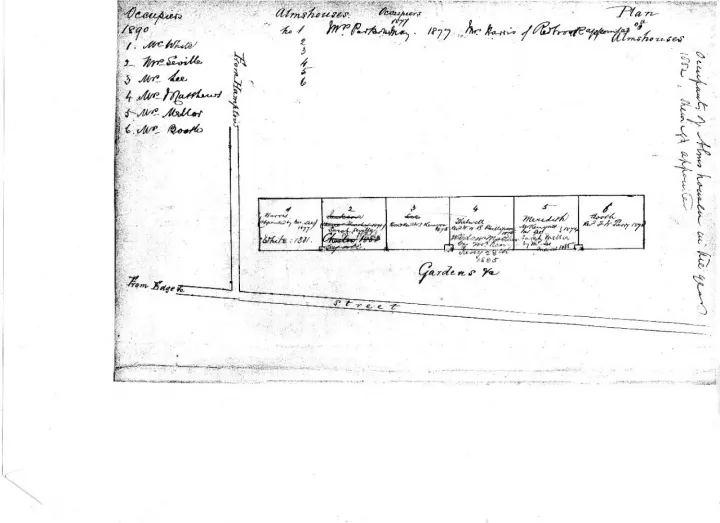
Like the Cholmondeley Almshouses, they have now been modified to provide two substantial dwellings and an office, used by the parish church.
Both sets of almshouses are now administered by the Malpas Almshouses Trust, a registered charity whose stated purpose is to provide housing accommodation for beneficiaries who are single men or women aged sixty years or over, and who have previously resided in Malpas or the surrounding area for a period of two years or more.
.
OId Hall Street dwellings in lease to the Township of Malpas
At one time, the Malpas Town Meeting, also known as the 'Vestry' meeting because it met originally in the vestry of Saint Oswald's church and which was the forerunner of the Parish Council (formed 1894), owned around 15 cottage properties in the town.
Ten or eleven of these stood on the site in Old Hall Street where the new Co-op Store is now.
The report below taken from the Malpas Parish Magazine in 1869 explains some of the difficulties encountered before the Old Hall Street cottages could be demolished. Also listed are the tenants of the cottages as they were in 1841.
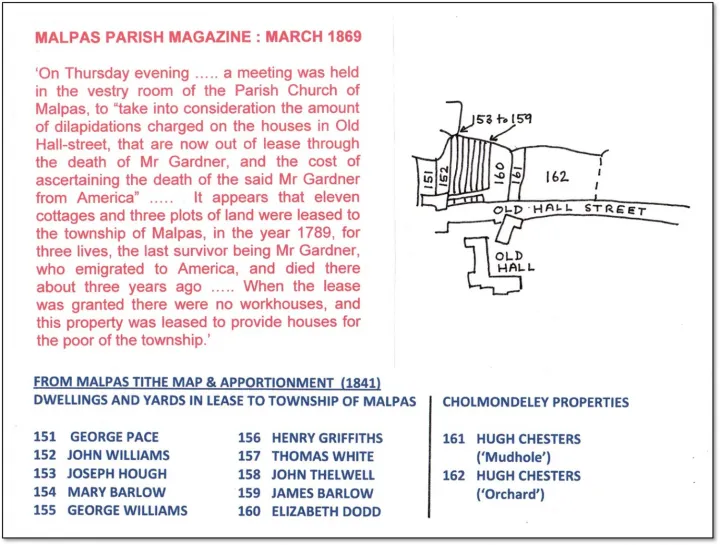
The tenants of the cottages were probably among the financially poorest families in the town.
The cottages were built around 1789 and demolished some time before 1874, by which time they were very crowded and extremely insanitary.
Malpas had been hit by a typhoid epidemic in 1871.
.
Evolution of Old Hall Street
After the cottages on Old Hall Street had been demolished, the Furber family built a smithy on the site and this gradually evolved into a motor garage, as horses were gradually replaced by petrol power.
.
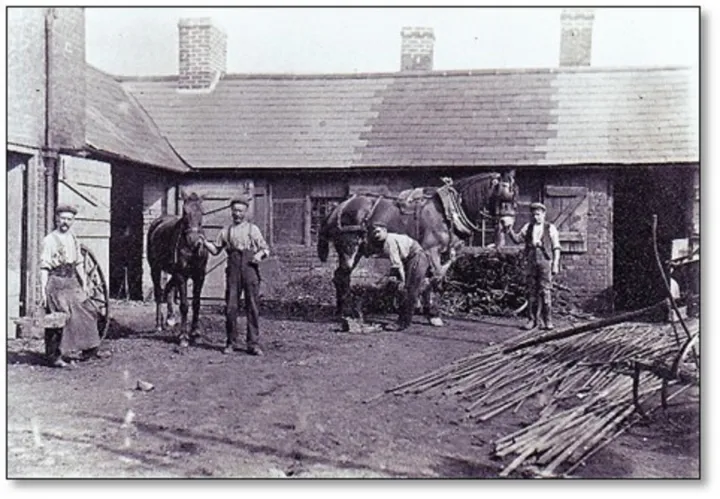
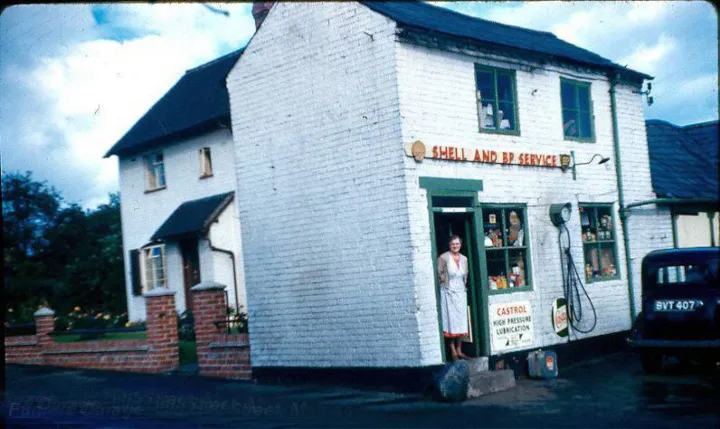
.
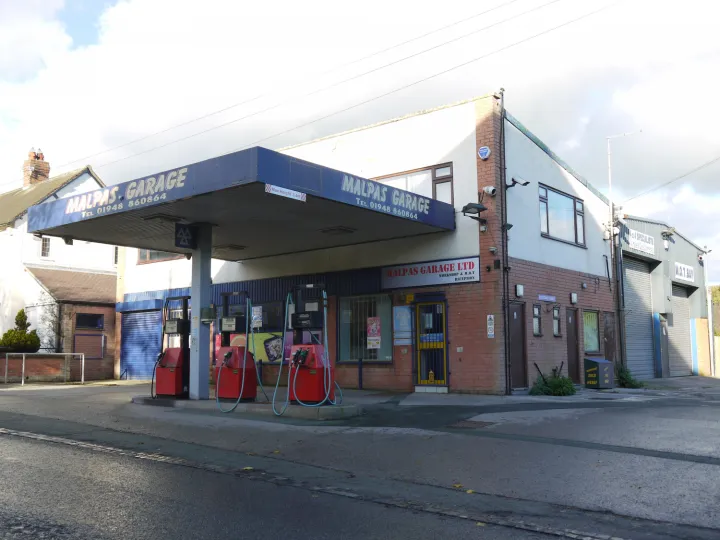
.
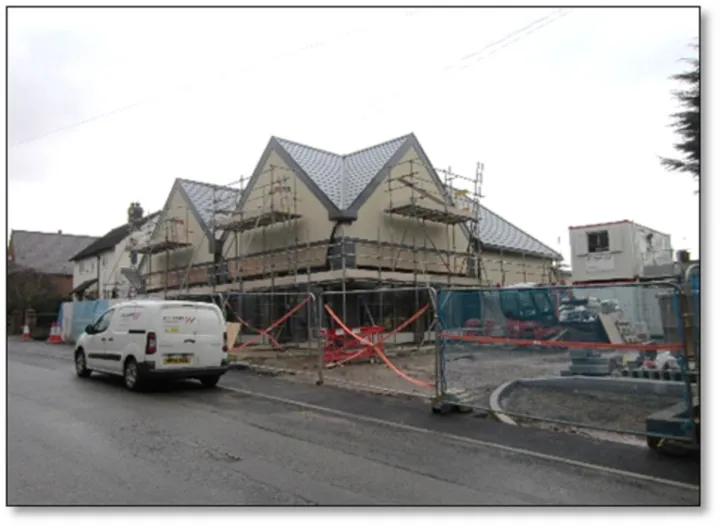
Malpas Philanthropists
During the final two decades of the nineteenth century, there were three benevolent Malpas business-men – Arthur Callcott, Joseph Lewis and Thomas Huxley – who sought to invest some of their hard-earned profits in bricks and mortar.
A report in the 'Chester Chronicle' in August 1884 spoke of 'a long-felt want being met by the erection of several new cottages in the town and neighbourhood'.
These included the first three cottages, on the former site of an old barn, which were to form part of Rock Terrace in the High Street.
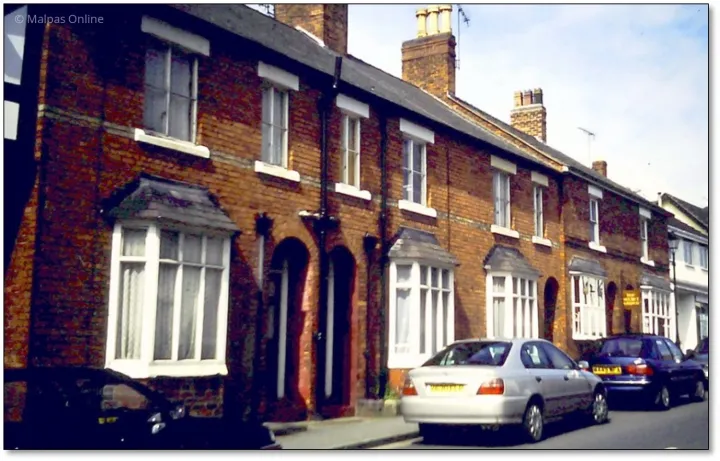
They were built as low cost housing for working people by Arthur Callcott, the clock and watchmaker, who was later to build himself a shop (pictured below, in 1897) at the north end of the terrace.
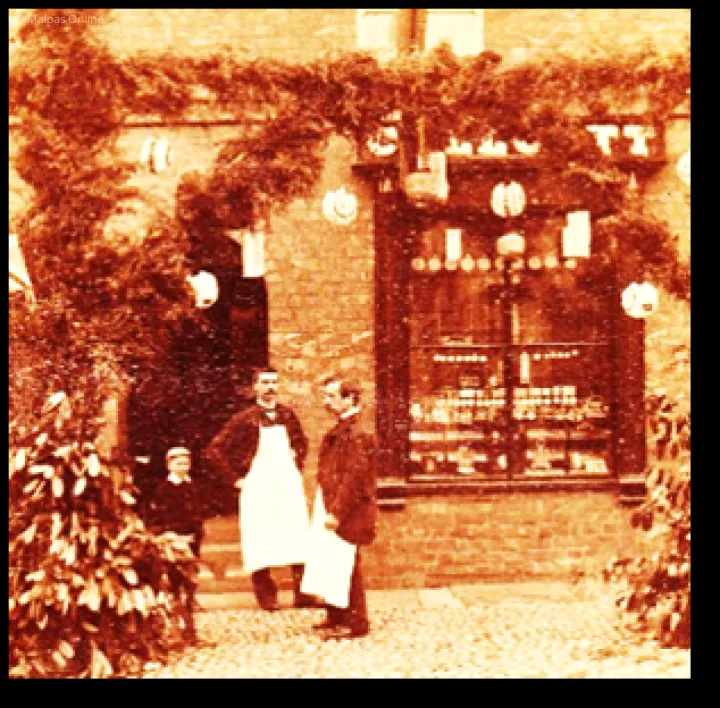
Also being built in 1884, by Joseph Lewis (pictured below, on his memorial plaque in the Jubilee Hall) at the same time that he was building The Beeches in Tilston Road as a residence for his own family, were the twelve Oathills Cottages, in the road known as 'Oathills', off Chester Road.

The newspaper report continued with the comment that: 'Of late years it has been the order to pull down and destroy the cottages but we are now glad to notice the reverse of the order, and new and better houses for the labouring classes erected, so that each week end the migration to other parts of those who toil in the neighbourhood will be reduced, and the facilities be greater for comfortable housing of those who come to work here.
.
The architecture of the Oathills Cottages is unusual for this area and has an 'Arts & Crafts' feel about it.
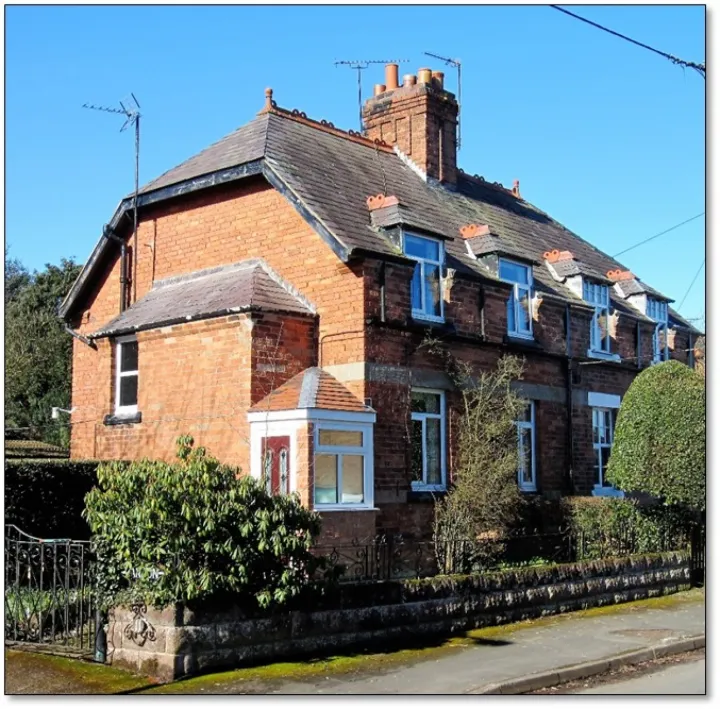
The 1891 Census Returns show that Joseph achieved his objective in attracting 'the labouring classes' to his new cottages at The Oathills.
In that year the occupations of the twelve heads of households were listed as two each of gardeners, bricklayers and general labourers, and one each of agricultural labourer, labourer on roads, foreman platelayer on the railway, groom and (house) painter.
The numbers in each household varied from eight (1 cottage), through seven (2), six (3), five (3) and four (2), to one household with only two members.
Six of the householders were natives of Malpas but the others had been born elsewhere in Cheshire (Handley and Chester), in the Maelor (Willington), in Shropshire (Whixall), in Montgomeryshire (Welshpool), and in Gloucestershire (Tewkesbury).
In 1895 the Oathills Cottages were purchased, as an investment for its Superannuation Fund, by the Loyal Clutton Lodge of Oddfellows, leading to them becoming known as the Oddfellows Cottages.
The 1901 Census shows that they continued to be occupied by working class families.
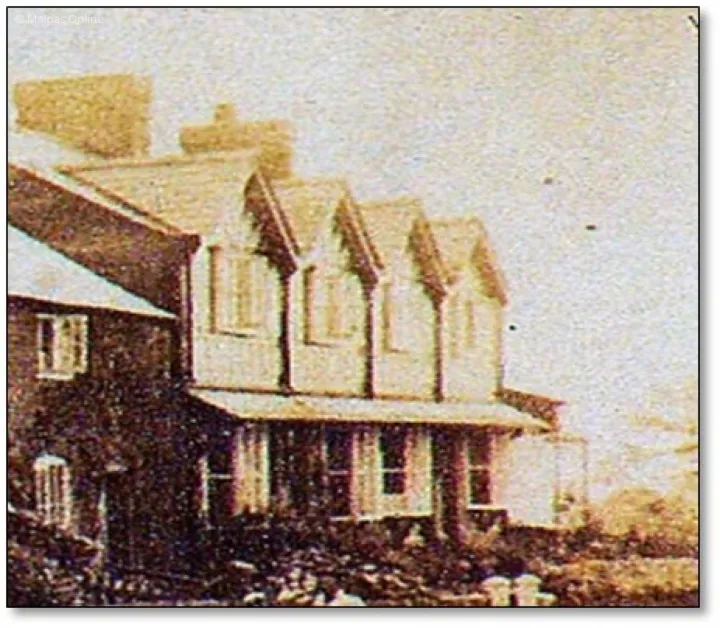
In 1899 Thomas Huxley, who ran the largest of the local building companies, submitted plans to Malpas Rural District Council, which in those days was the local planning authority, his proposals for four new cottages in Church Street.
These cottages known today as Welsh View, with 'mock half-timbering' to the upper storey, were built soon afterwards.
They were probably intended as housing for Huxley's employees.
.
Housing of the Working Classes Act – 1900
Two years after the passing of the 1900 Housing of the Working Classes Act, Malpas Parish Council decided to investigate the possibility of building twelve cottages, under the powers which the Council might have been able to adopt under the Act.
The plan was to build these cottages on the Moss Land, a group of wet fields lying to the south of the town, which the Parish Council had inherited from the Town Meeting.
Today the council still receives rental income from the fields. At the time they were let out in allotment strips to around 15 or more tenants.
The council approached the agents for Squire Drake and Lord Cholmondeley to enquire if there was any likelihood that either landowner would be building any cottages in the near future.
The responses were negative and so it seemed that the only way in which new lower cost housing would be built in Malpas would be for the Parish Council to push forward the project itself.
Plans were altered after the council had called a meeting of ratepayers (i.e. a parish meeting) in October 1902.
As a result of that meeting a request was sent to Malpas Rural District Council, asking that Council to use the powers which it had available to it to adopt Part III of the 1890 Housing of the Working Classes Act.
Adoption of the Act would put the Rural District Council (RDC) in a position where it could apply to Cheshire County Council for a certificate authorising the RDC to take out a loan towards the cost of providing houses in Malpas.
The RDC did listen to the Parish Council and two months later adopted Part III of the 1890 Act, as a necessary first stage towards obtaining the sanction of the Local Government Board to take out 'a loan to provide twelve cottages'.
In March 1904 the RDC approved the first plans and resolved to apply for permission to take out loans over 60 years. These were for £3,200 to acquire a site and to build twelve 'cottages' in Wrexham Road, and for £700 to acquire another site and build five cottages in Well Street.
Progress was slow until September 1905, by which time the scheme for cottages in Well Street had been dropped.
The RDC established a small Housing Committee, authorised to advertise in the local newspapers for a loan of £2,500 towards the Wrexham Road scheme, once it had been approved by the Local Government Board.
Eventually the money was borrowed from Liverpool Corporation at a rate of 4% over 30 years. Malpas RDC had been very far-sighted in erecting such an early set of local authority or 'council' houses.
Before the First World War, council house building in rural areas was very limited.
Only 470 rural houses were built across the whole country between 1890 and 1909, by only eight rural local authorities, which means that the twelve built at Sunnyside in 1906 represent about 1 in 40 of the national total.
Why the Council was so enthusiastic about the Sunnyside project is not clear from its minute books.
There seem to have been around 25 councillors in all. From evidence in a local directory, it appears that 14 of them were farmers.
Therefore, could it be that they saw council housing as one solution to providing accommodation for farm workers, in cases where their own tied cottages were becoming dilapidated and expensive to maintain or replace?
If so, their hopes were frustrated. The 1911 Census Enumerators' Returns list the occupations of the heads of household of the Sunnyside Cottages as: manager for boot dealer; blacksmith; carpenter; police constable; plumber; tailor; house painters (2); farm bailiff; hay trusser; gardener; joiner.
1911 Census Return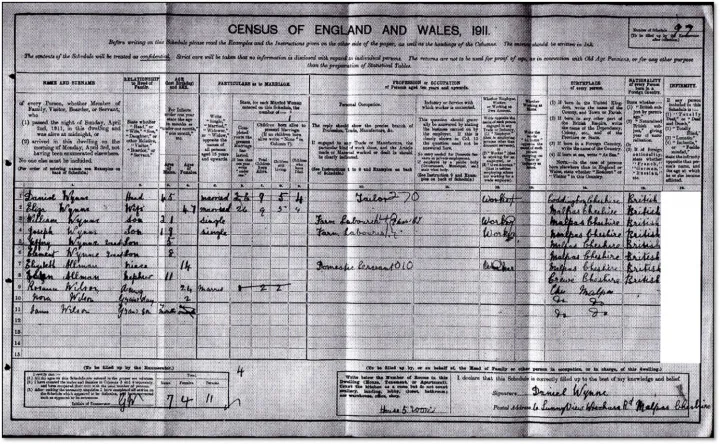
.
The picture below shows one of the blocks in Sunnyside, which consists of four dwellings on two levels.
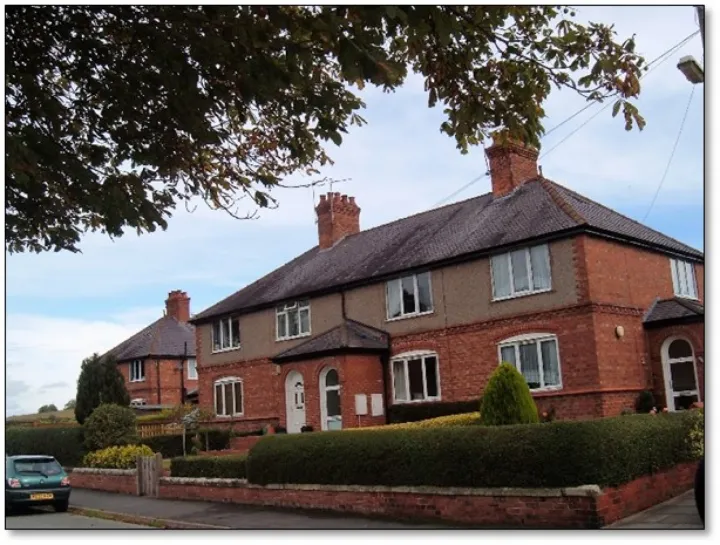
By 1921, ten more houses had been built by the RDC, in semi-detached pairs, at Sunnyside and four more at The Oathills.

.
There were eight in Well Avenue (known initially as 'Council' Avenue) and four close by at Well Meadow.
The photograph below shows one of the pairs in Well Avenue with an inset showing the Malpas Rural District Council logo on a gable end.
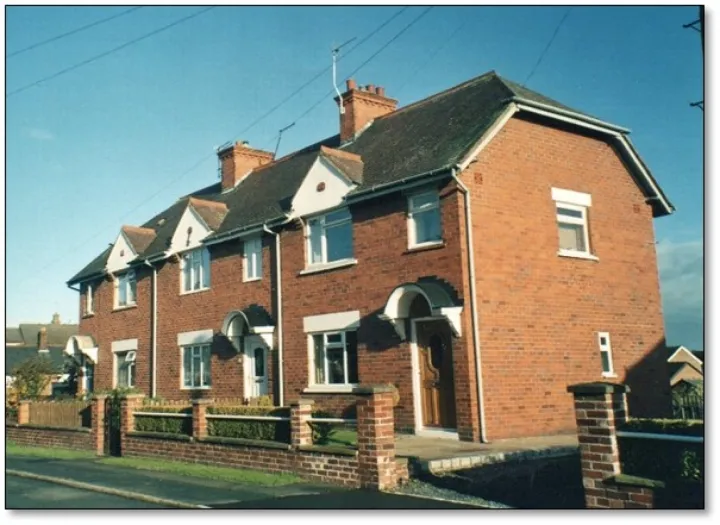
Houses were also built by the Malpas Rural District Council at Kidnal and Edge.
The last houses erected in Malpas township by Malpas Rural District Council were built in 1933, before Malpas RDC was absorbed into Tarvin RDC in 1936.
Malpas Parish Council still owned two cottages in 1949, when it was agreed to apply to the Ministry of Health for permission to sell them to Tarvin Rural District Council, which was then the Housing Authority for the area.
Permission was given and the two, in Well Street and Tilston Road, were sold to the Tarvin Rural District Council for the nominal sum of five pounds.
The one in Well Street has been demolished but this one below in Tilston Road, much altered since the sale and now privately owned, still stands.
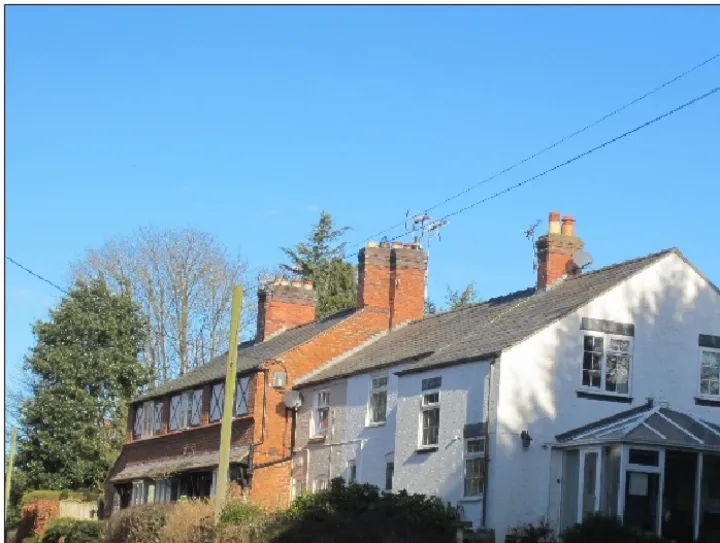
.
After World War One
Circumstances in Malpas were to change unexpectedly during the years after the First World War.
Until the early 1920s the two major local landowners, the Drake and Cholmondeley Estates, had been important providers of rented housing in the town. However, all across the country landowners faced numerous discouragements to cottage building in the years between 1870 and 1914.
Farm rents fell and many proprietors were consequently short of funds with which to build cottages.
The reduced incomes of landowners now became subject to higher rates and central and local government taxation, while at the same time the costs of building cottages were rising for a variety of reasons and new rural bye-laws imposed higher expenses than formerly while the standards of accommodation expected were rising.
Across most of Great Britain a number of complex factors, including the increased financial pressures upon landowners and the loss of sons who would have inherited land but did not survive the war, caused many larger landowners to sell off all or part of their estates and to re-invest their wealth elsewhere.
The process had started in the 1880s but reached a peak in the years 1919 to 1921, in which year the Estates Gazette stated that 'with the continued breaking up of innumerable ancestral domains, all England seems to be changing hands'.
The Drakes in 1921 and the Cholmondeleys in 1924 felt that they had no alternative but to sell off many of their properties, providing an opportunity for former tenants to purchase the freeholds of the properties they occupied.
The catalogues for the two estate sales show that in the civil parish of Malpas in 1921 the Drake Estate disposed of 8 cottages and that in 1924 the Cholmondeley Estate sold 23 cottages.
Some of these 31 properties would have been bought by existing tenants, some may have been sold to new owner occupiers, while others would have been taken over by new landlords who kept on the existing tenants.
The overall result was that a number of smaller rented properties were taken out of the ownership of two reasonably benevolent landowners, although the Electoral Registers indicate that most tenancies remained fairly secure under the new owners.
The influence of the landed estates was waning fast and it was highly unlikely they would ever undertake again the building of new accommodation, for rental to their workers or to other tenants.
The map below shows the locations in the town of the properties sold off by the two estates.
.
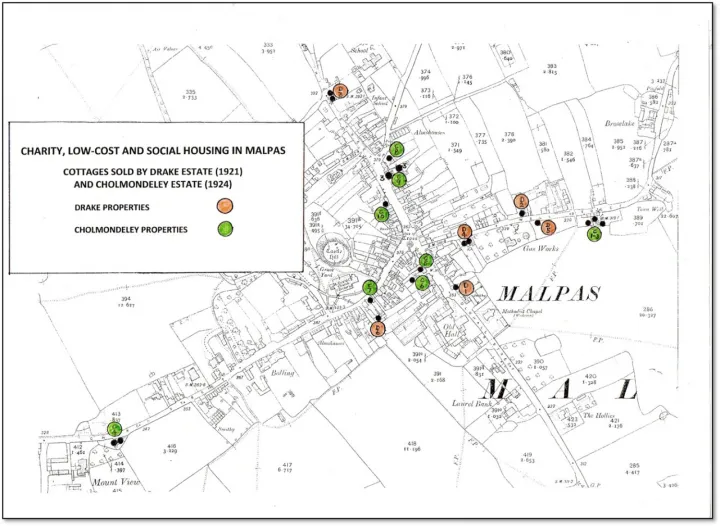
The pair of cottages below, located opposite the entrance to Hughes Lane and the Recreation Ground, were among those sold by the Drake Estate in 1921.
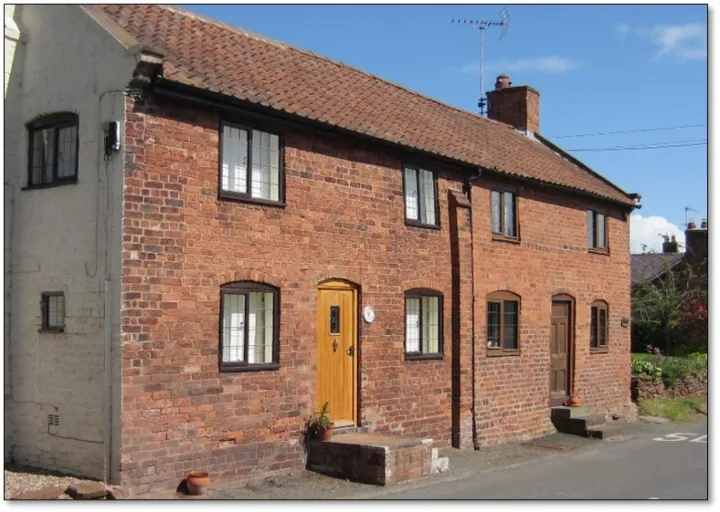
Below is the front cover of the sale catalogue and the entry for these two cottages.
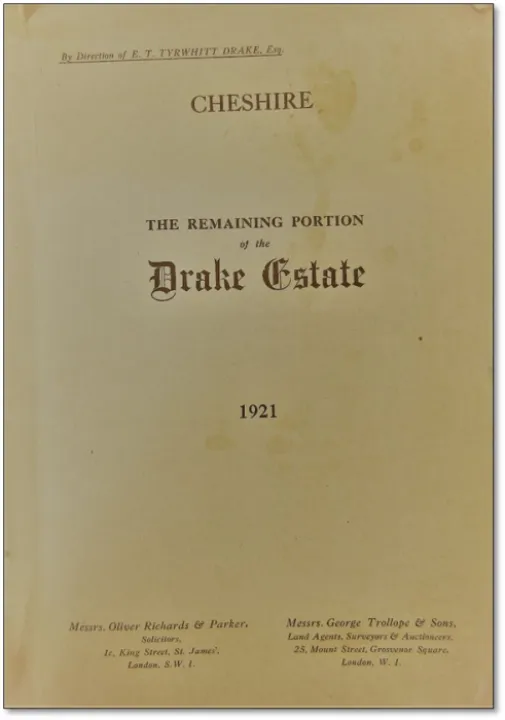
.
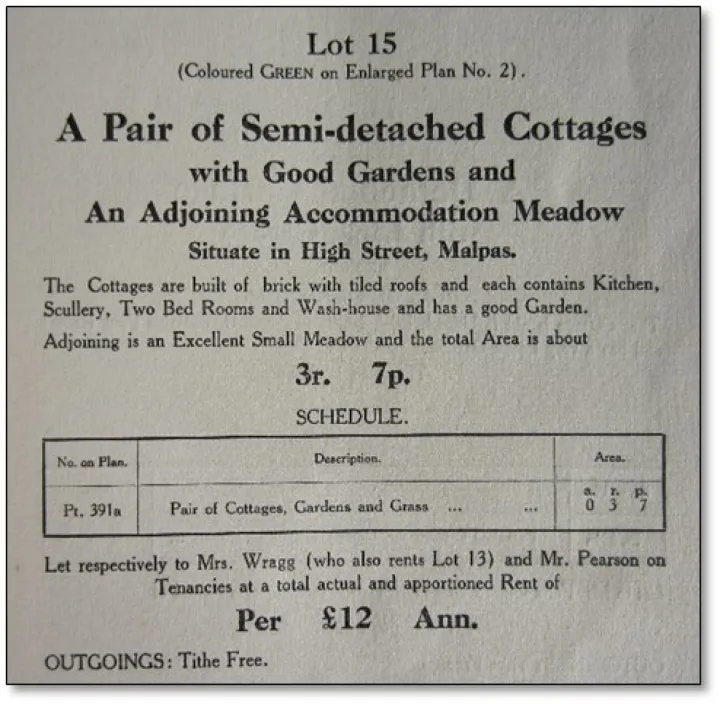
Church Street
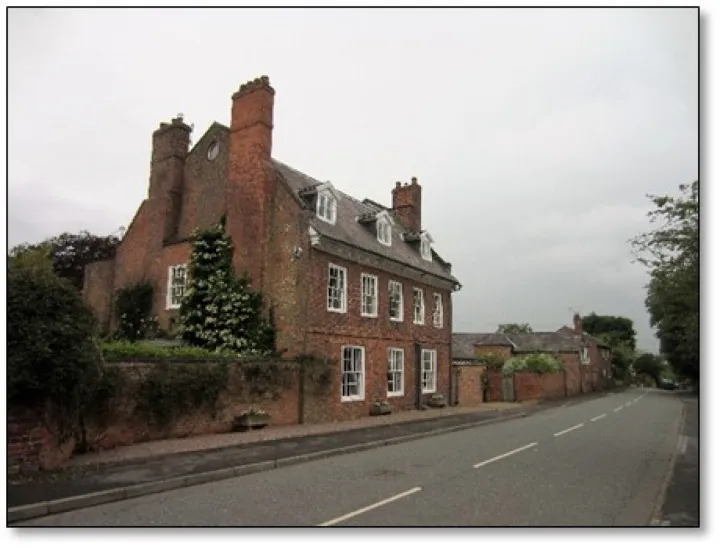
The map below which was produced in 1805 illustrates part of the Glebe Lands belonging to the Lower Rectory (The Bolling) on Church Street. It also shows some of the adjoining properties, including two cottages which still exist.

.
The enlarged portion of the 1805 map below shows William Price's holding, which includes what is now Yew Tree Cottage and the land now occupied by the four Welsh View cottages.
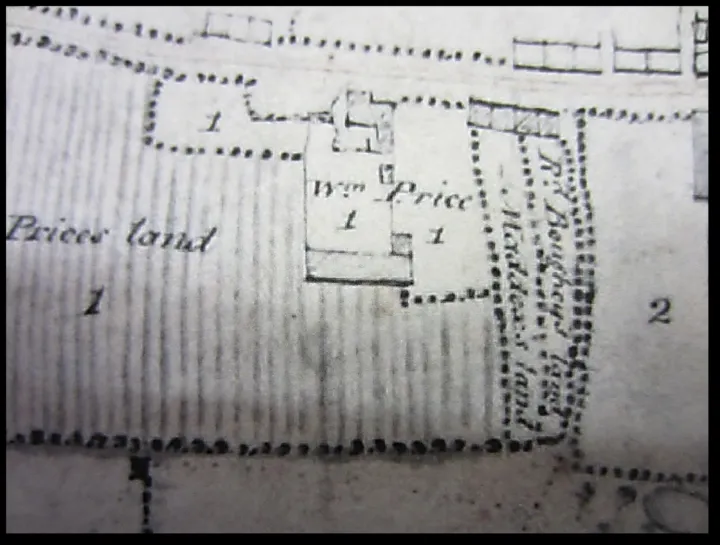
At the south end of Price's property is the range of farm buildings which were later converted to become the six cottages in Smithy Lane.
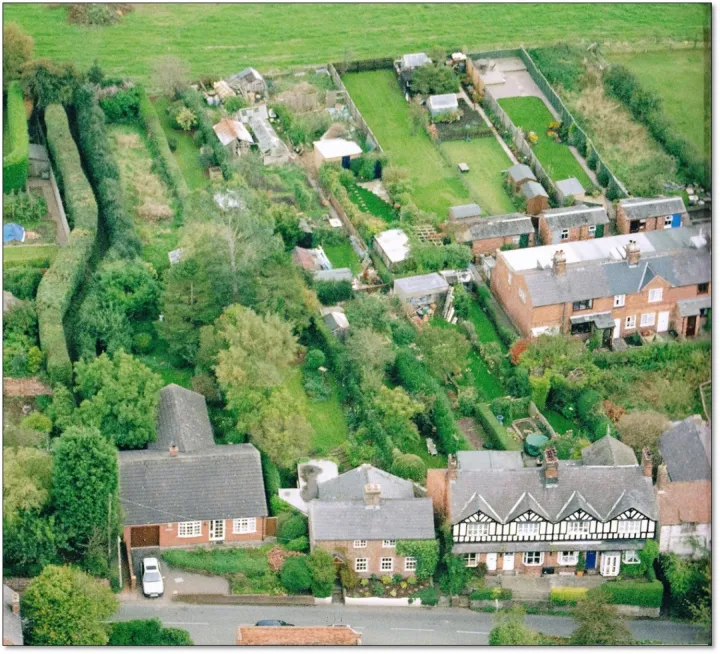
.
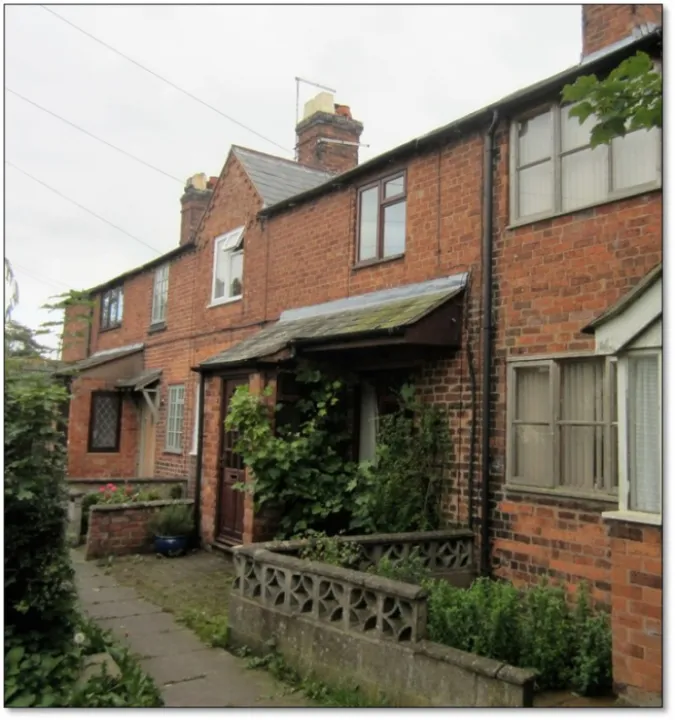
Below is a postcard dating from about 1906 showing a now-demolished thatched stone cottage, with Welsh View Cottages in the background. The next picture shows Walk Cottage, which has replaced the thatched property.
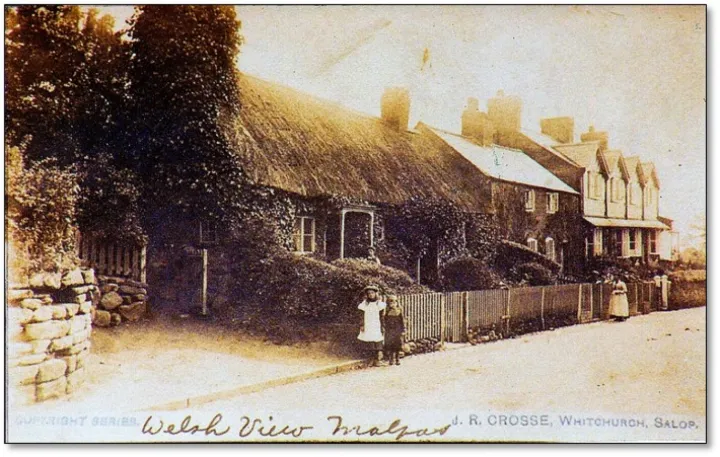
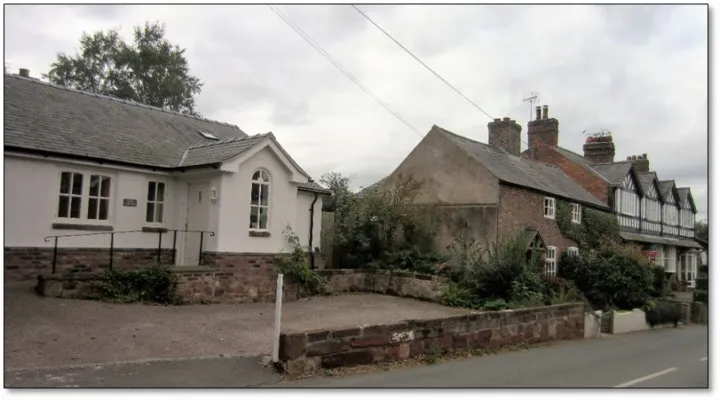
Below is a 1950's photograph of Church Street with Yew Tree Cottage in the right foreground, and below that is Yew Tree Cottage as it exists today.


After World War Two
One of the great disappointments after the First World War had been the let-down felt by those hoping for new local authority housing after the Government had promised 'Homes fit for Heroes', of which few were built.
There were a number of factors at work nationally which influenced this lack of new building, including the steep rise in prices of building materials and a lack of building firms and skilled workers willing to work on local authority, as opposed to private, schemes.
In March 1944 the Government made a new promise that, within two years of the defeat of Germany, between two and three hundred thousand new houses would be built across the country.
Malpas saw part of this promise come true in 1946 when Tarvin RDC placed a compulsory purchase order on the Kiln Field and neighbouring land in order to build new local authority housing, a scheme which had first been discussed just before the war.
By 1947 building was under way on the new estate, comprising Well Avenue, Springfield Road and Springfield Avenue, where initially 34 new houses were built at a total cost of around £75,000, inclusive of site purchase, roads and services.
The houses were a mixture of thirty three-bedroomed and four four-bedroomed units, all described as 'non-parlour' (i.e. without separate sitting rooms).
Some of the houses in Springfield Road are shown here.
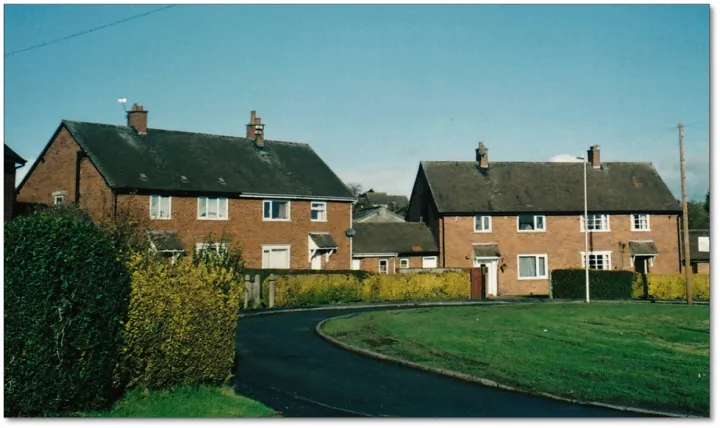
Later developments by Tarvin RDC included bungalows for elderly persons in Old Hall Street, shown below.
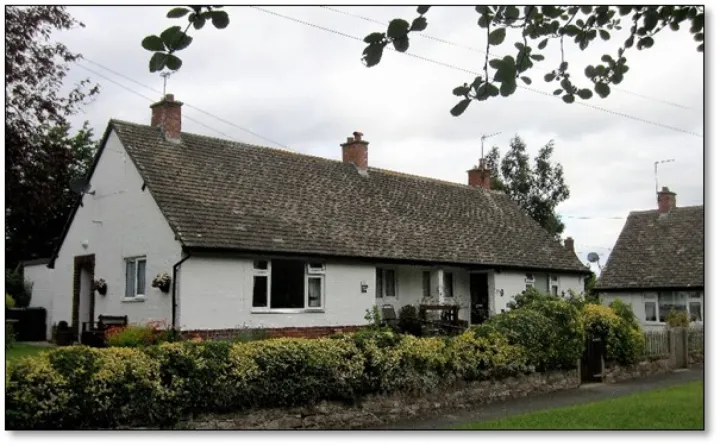
Chester City Council
Following the 1972 Local Government Act, Tarvin RDC was incorporated into the new local government district administered by Chester City Council who became the local housing authority.
No new individual houses were built in Malpas, but the City Council did build Craddock Court, a sheltered housing development comprising 35 separate properties.
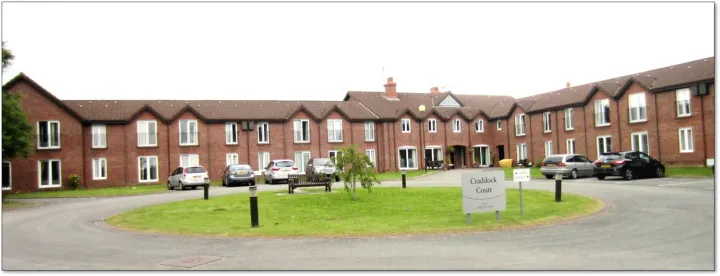
The entire City Council housing stock was transferred in 2001 to the independent Chester & District Housing Trust, which in 2012 was granted permission to build three new houses, shown below, to replace two bungalows in Springfield Road.
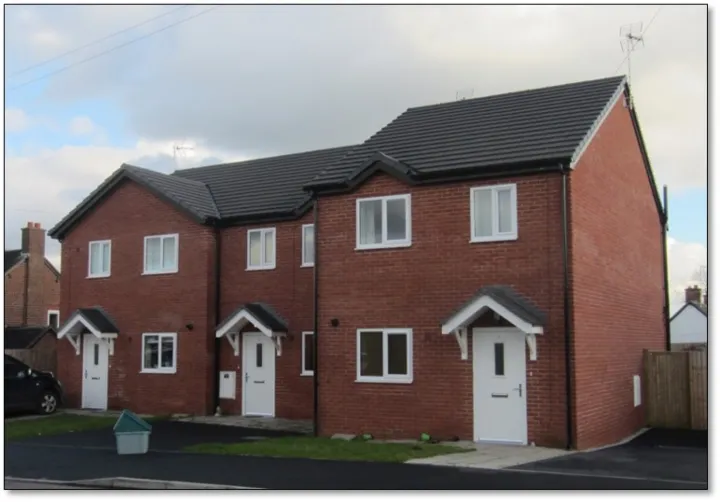
Shown below is part of the terrace of twelve affordable properties in Tilston Road, built in 2011 as a planning condition of the 'The Beeches' development.
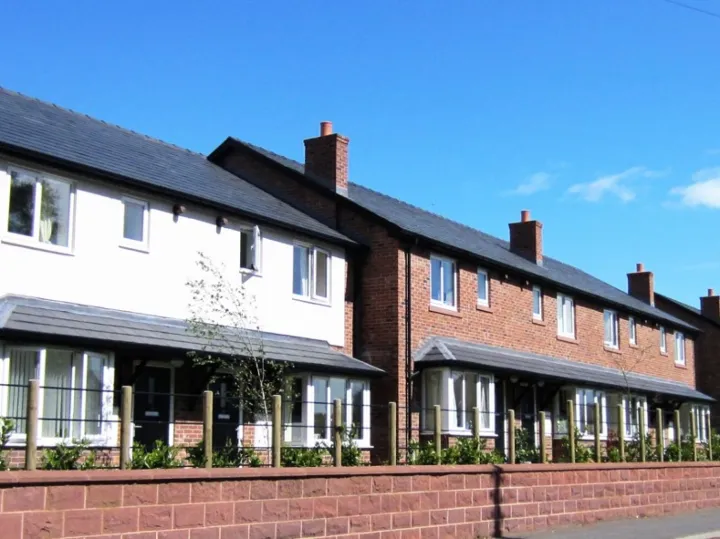
This housing was in the tradition established by Joseph Lewis, builder of The Beeches, who in 1884 had built the Oathills Cottages, also as affordable housing.
Both Rylands Close and Brockbank are now let at 'affordable' rents through housing associations.
This map below shows the locations of the various types of charity, affordable and social housing covered by this article.

The buildings described above are a very visible and important element of the Malpas historical landscape and those who have lived in them have all made their own unique contributions towards the life of the community.
Maintaining a balance of affordable and more up-market housing is essential to ensure that a vibrant rural community, such as Malpas, can continue to thrive.
The current planning guidelines dictate that 30% of new housing on sites over 5 dwellings should be affordable. Alternatively the developer can negotiate a monetary contribution that will be entered into a Ward affordable housing "pot"
What is defined as affordable?
The current policy also dictates that if affordable properties are built, then they should be "pepper potted" across the development site.
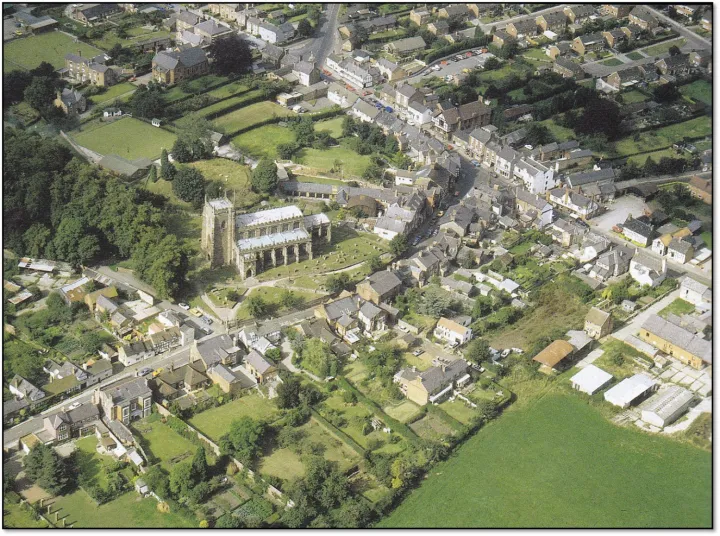
Article published by Chris Whitehurst on 25th December 2022 using material researched by David Hayns
Quick Links
Village Map
Get In Touch
MalpasOnline is powered by our active community.
Please send us your news and views using the button below:

